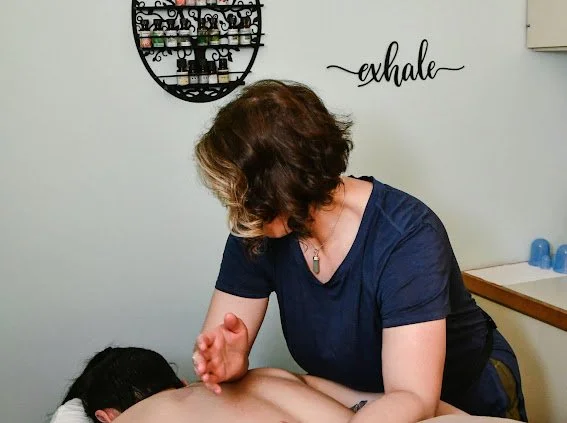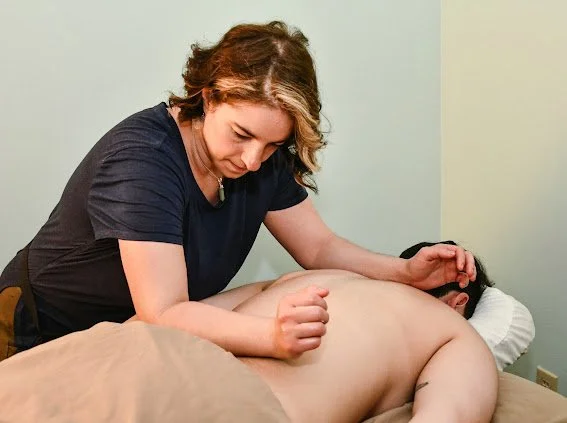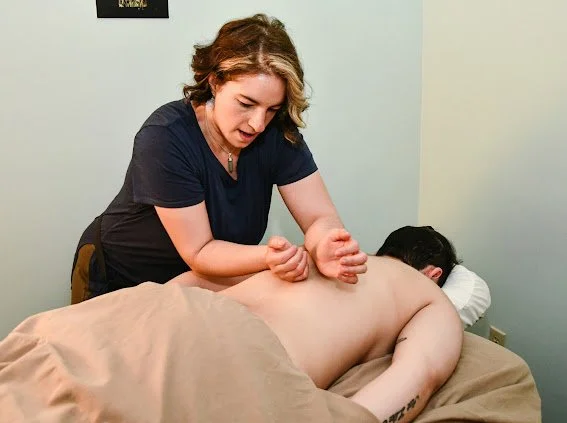Deep tissue massage involves techniques aimed at reaching the deeper layers of muscle and connective tissue to release chronic tension, improve circulation, and promote healing. Here are some common deep tissue techniques that therapists use:
1. Slow, Deep Pressure
Description: The therapist applies slow, firm pressure to areas with tight muscles or chronic tension. The goal is to reach deeper layers of muscle tissue.
Benefits: Helps release muscle knots and alleviate chronic pain.
2. Stripping
Description: A technique where the therapist uses deep, gliding strokes, often along the length of a muscle or along muscle fibers. The pressure is applied in one continuous motion.
Benefits: Target specific areas of tension and tightness, helping to release muscle adhesions and scar tissue.
3. Cross-Fiber Friction
Description: The therapist applies pressure perpendicular to the direction of the muscle fibers. The pressure can be deep, and it's often done in short, concentrated strokes.
Benefits: Used to break up adhesions and scar tissue, particularly in the connective tissues and tendons.
4. Myofascial Release
Description: Focuses on the fascia, the connective tissue surrounding muscles. The therapist applies gentle, sustained pressure to relieve tension and restrictions in the fascia.
Benefits: Helps with flexibility, reduces pain, and improves range of motion.
5. Trigger Point Therapy
Description: Targets specific "trigger points" in the muscles—small, tight knots that can cause referred pain. The therapist applies direct, focused pressure to these points, sometimes holding the pressure for several seconds.
Benefits: Releases muscle spasms, reduces pain, and can provide relief from referred pain.
6. Petrissage
Description: Involves kneading and squeezing the muscle tissue, similar to the action of kneading dough. It’s done with varying intensity, depending on the area being worked on.
Benefits: Helps improve blood flow, reduce muscle tension, and stretch muscle fibers.
7. Frictions
Description: A technique where the therapist applies short, deep movements to specific areas of tension or injury, often with the thumbs or fingers. This is more intense than regular massage strokes.
Benefits: Reduces scar tissue, increases circulation, and improves the movement of muscles and joints.
8. Rolfing (Structural Integration)
Description: A technique that aims to realign and balance the body’s structure by working on the fascia and soft tissues. It can be very deep and intense.
Benefits: Helps with long-term posture correction and the relief of chronic tension.
9. Active Release Technique (ART)
Description: A specialized movement-based massage technique that targets soft tissue injuries. The therapist isolates a muscle, applies deep pressure, and then asks the client to move the muscle through a specific range of motion to release adhesions.
Benefits: Effective for injuries related to repetitive movement or chronic strain, like tendonitis.
10. Sports Massage (Deep Tissue Focus)
Description: A combination of deep tissue and stretching techniques that focus on improving muscle flexibility, reducing tension, and preventing injuries.
Benefits: Especially beneficial for athletes or those with physically demanding lifestyles.
11. Cupping Therapy (Combined with Deep Tissue)
Description: Cupping involves placing heated cups on the skin to create suction, which can draw blood to the surface and relax muscle tissue. When combined with deep tissue techniques, it can increase blood flow and reduce muscle tightness.
Benefits: Promotes healing and recovery, increases blood circulation, and relieves muscle stiffness.
These techniques often overlap, and a skilled therapist may blend them depending on the client's specific needs. Deep tissue massage is usually beneficial for chronic pain, muscle tension, and injury recovery, but it’s important to communicate with the therapist about the level of pressure that feels comfortable and effective.




